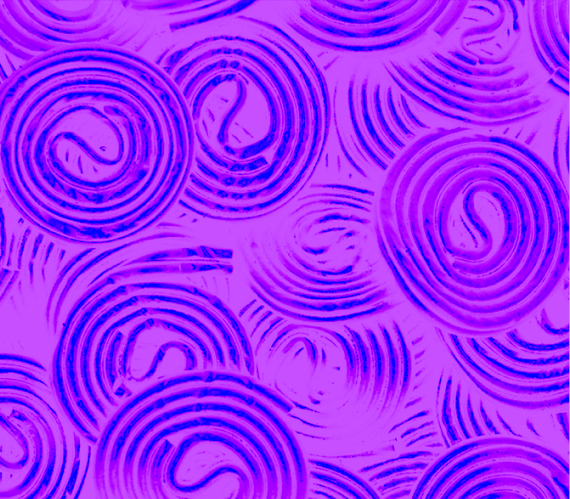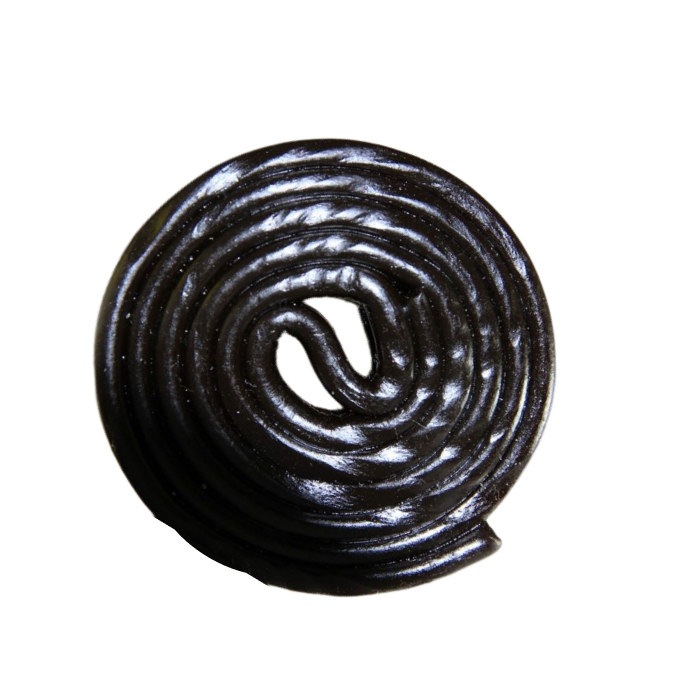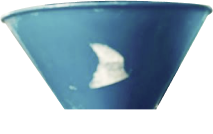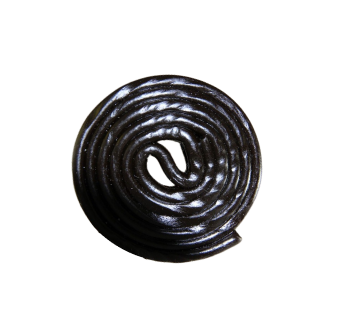
Domain: Eukaryotes
Realm: Plants
Division: Floral
Class: Dicotyledonous
Order: Legumes
Family: Legumes
Genus: Licorice
Species: Licorice
International Scientific Name
Glycyrrhiza glabra L., 1753
Systematics
ITIS 26718
NCBI 49827
EOL 703239
GRIN t: 17820
IPNI 496941-1
TPL ild-7886
Realm: Plants
Division: Floral
Class: Dicotyledonous
Order: Legumes
Family: Legumes
Genus: Licorice
Species: Licorice
International Scientific Name
Glycyrrhiza glabra L., 1753
Systematics
ITIS 26718
NCBI 49827
EOL 703239
GRIN t: 17820
IPNI 496941-1
TPL ild-7886

/ For taste and color /
/ licorice in antiquity /
The history of the licorice root,[1] from which licorice
is later extracted, goes back several thousand years.
However, what we know today as licorice was considered
a medicinal remedy until the 18th century. Licorice root was generally used for coldsand also for stomach ailments.
It is also mentioned in traditional Chinese herbal books
and in Egyptian papyrus. Scientists have found licorice
in the tomb of a pharaoh, during the excavationof the tomb
of Tutankhamen (1347-1339 B.C.).[2] Ancient Greek and
Roman physicians favored licorice root as a cure for coughs,
colds, and catarrh (inflammation of the mucous membranes).
is later extracted, goes back several thousand years.
However, what we know today as licorice was considered
a medicinal remedy until the 18th century. Licorice root was generally used for coldsand also for stomach ailments.
It is also mentioned in traditional Chinese herbal books
and in Egyptian papyrus. Scientists have found licorice
in the tomb of a pharaoh, during the excavationof the tomb
of Tutankhamen (1347-1339 B.C.).[2] Ancient Greek and
Roman physicians favored licorice root as a cure for coughs,
colds, and catarrh (inflammation of the mucous membranes).
Liquorice is a
product based
on the extract
of licorice root.
It tastes like this delicacy
reminiscent of
cough syrups.
In most licorice
has a distinctly pronounced black
color, which
is achieved
by charcoal.
Licorice exists
as a stand-alone
candy product,
aswell as an additive.[6]
product based
on the extract
of licorice root.
It tastes like this delicacy
reminiscent of
cough syrups.
In most licorice
has a distinctly pronounced black
color, which
is achieved
by charcoal.
Licorice exists
as a stand-alone
candy product,
aswell as an additive.[6]
Liquorice is not just candy, but also a plant, which in Finnish is called lakritsi. In Russian is licorice. It's the same licorice that sold in Russian pharmacies
and is part of many medicines.
and is part of many medicines.



The history of the licorice root,[1] from which licorice is later extracted, goes back several thousand years. However, what we know today as licorice was considered a medicinal remedy until the 18th century. Licorice root was generally used for colds
and also for stomach ailments. It is also mentioned in traditional Chinese herbal books and in Egyptian papyrus. Scientists have found licorice in the tomb of a pharaoh, during the excavation
of the tomb of Tutankhamen (1347-1339 B.C.).[2] Ancient Greek
and Roman physicians favored licorice root as a cure for coughs, colds, and catarrh (inflammation of the mucous membranes).
and also for stomach ailments. It is also mentioned in traditional Chinese herbal books and in Egyptian papyrus. Scientists have found licorice in the tomb of a pharaoh, during the excavation
of the tomb of Tutankhamen (1347-1339 B.C.).[2] Ancient Greek
and Roman physicians favored licorice root as a cure for coughs, colds, and catarrh (inflammation of the mucous membranes).
During the Renaissance, licorice became a "folk" medicine. A 17th century botanical reference book described in detail the licorice plant and the uses of its juice extracted from the root. In the Russian kitchen liquorice was mostly added to dried fruit such as apples, cloudberries and cranberries. However, it was later
replaced by sugar.[3] The addition of salt
to licorice is quite popular in the Netherlands,
Germany, Finland and other northern countries.[4]
replaced by sugar.[3] The addition of salt
to licorice is quite popular in the Netherlands,
Germany, Finland and other northern countries.[4]
Liquorice is a product based on the extract of licorice root. It tastes like this delicacy reminiscent of cough syrups.
In mostlicorice has a distinctly pronounced black
color, which
is achieved by
charcoal. Licorice
exists as a
stand-alone
candy product,
as well as an additive.[6]
In mostlicorice has a distinctly pronounced black
color, which
is achieved by
charcoal. Licorice
exists as a
stand-alone
candy product,
as well as an additive.[6]
Licorice is not a rare plant, it grows wild In the south of Russia, in the Caucasus, Ukraine, Siberia, and Asia. It is an herbaceous plant of the legume family, the root of which is boiled and this sweet mass is used in the confectionery industry.
During the Renaissance, licorice became
a "folk" medicine. A 17th century botanical reference book described in detail the licorice plant and the uses of its juice extracted from
the root. In the Russian kitchen liquorice was mostly added to dried fruit such as apples, cloudberries and cranberries. However, it was laterreplaced by sugar.[3] The addition
of saltto licorice is quite popular in the Netherlands, Germany, Finland
and other northern countries.[4]
a "folk" medicine. A 17th century botanical reference book described in detail the licorice plant and the uses of its juice extracted from
the root. In the Russian kitchen liquorice was mostly added to dried fruit such as apples, cloudberries and cranberries. However, it was laterreplaced by sugar.[3] The addition
of saltto licorice is quite popular in the Netherlands, Germany, Finland
and other northern countries.[4]
The history of the licorice root,[1] from which licorice is later extracted, goes back several thousand years. However, what we know today as licorice was considered a medicinal remedy until the 18th century. Licorice root was generally used for colds and also for stomach ailments. It is also mentioned in traditional Chinese herbal books and in Egyptian papyrus. Scientists have found licorice in the tomb
of a pharaoh, during the excavation of the tomb of Tutankhamen (1347-1339 B.C.).[2] Ancient Greek and Roman physicians favored licorice root as a cure for coughs, colds, and catarrh (inflammation of the mucous membranes).
of a pharaoh, during the excavation of the tomb of Tutankhamen (1347-1339 B.C.).[2] Ancient Greek and Roman physicians favored licorice root as a cure for coughs, colds, and catarrh (inflammation of the mucous membranes).
Licorice is not a rare plant, it grows wild
In the south of Russia, in the Caucasus, Ukraine, Siberia, and Asia. It is an herbaceous plant of the legume family, the root of which
is boiled and this sweet mass is used in the confectionery industry.
In the south of Russia, in the Caucasus, Ukraine, Siberia, and Asia. It is an herbaceous plant of the legume family, the root of which
is boiled and this sweet mass is used in the confectionery industry.
Liquorice is not
just candy, but also
a plant, which in Finnish
is called lakritsi.
In Russian is licorice.
t's the same licorice
that sold in Russian
pharmacies
and is part of many
medicines.
just candy, but also
a plant, which in Finnish
is called lakritsi.
In Russian is licorice.
t's the same licorice
that sold in Russian
pharmacies
and is part of many
medicines.
The history of the licorice root,[1] from which licorice is later extracted, goes back several thousand years. However, what we know today
as licorice was considered a medicinal remedy until the 18th century. Licorice root was generally used for colds and also for stomach ailments.
It is also mentioned in traditional Chinese herbal books and in Egyptian papyrus. Scientists have found licorice in the tomb of a pharaoh, during the excavation of the tomb of Tutankhamen (1347-1339 B.C.).[2] Ancient Greek and Roman physicians favored licorice root as a cure for coughs, colds, and catarrh (inflammation of the mucous membranes).
as licorice was considered a medicinal remedy until the 18th century. Licorice root was generally used for colds and also for stomach ailments.
It is also mentioned in traditional Chinese herbal books and in Egyptian papyrus. Scientists have found licorice in the tomb of a pharaoh, during the excavation of the tomb of Tutankhamen (1347-1339 B.C.).[2] Ancient Greek and Roman physicians favored licorice root as a cure for coughs, colds, and catarrh (inflammation of the mucous membranes).
During the Renaissance, licorice became a "folk" medicine. A 17th century botanical reference book described in detail the licorice plant and the uses of its juice extracted from the root. In the Russian kitchen liquorice was mostly added to dried fruit such as apples, cloudberries and cranberries. However, it was later replaced by sugar.[3] The additionof salt to licorice
is quite popular in the Netherlands, Germany, Finland and other northern countries.[4]
is quite popular in the Netherlands, Germany, Finland and other northern countries.[4]
Liquorice is not just candy, but also
a plant, which in Finnish is called lakritsi.
In Russian is licorice. It's the same licorice
that sold in Russian pharmacies
and is part of many medicines.
a plant, which in Finnish is called lakritsi.
In Russian is licorice. It's the same licorice
that sold in Russian pharmacies
and is part of many medicines.
Licorice is not a rare plant, it grows wild In the south of Russia, in the Caucasus, Ukraine, Siberia, and Asia. It is an herbaceous plant of the legume family, the root of which is boiled and this sweet mass is used
in the confectionery industry.
in the confectionery industry.
The history of the licorice root,[1] from which licorice is later extracted, goes back several thousand years. However, what we know today
as licorice was considered a medicinal remedy until the 18th century. Licorice root was generally used for colds and also for stomach ailments. It is also mentioned in traditional Chinese herbal books and in Egyptian papyrus. Scientists have found licorice in the tomb
of a pharaoh, during the excavation of the tomb of Tutankhamen (1347-1339 B.C.).[2] Ancient Greek and Roman physicians favored licorice root as a cure for coughs, colds, and catarrh (inflammation of the mucous membranes).
as licorice was considered a medicinal remedy until the 18th century. Licorice root was generally used for colds and also for stomach ailments. It is also mentioned in traditional Chinese herbal books and in Egyptian papyrus. Scientists have found licorice in the tomb
of a pharaoh, during the excavation of the tomb of Tutankhamen (1347-1339 B.C.).[2] Ancient Greek and Roman physicians favored licorice root as a cure for coughs, colds, and catarrh (inflammation of the mucous membranes).
Liquorice is a
product based
on the extract
of licorice root.
It tastes like this delicacy
reminiscent of
cough syrups.
In most licorice
has a distinctly pronounced black
color, which
is achieved
by charcoal.
Licorice exists
as a stand-alone
candy product,
aswell as an additive.[6]
product based
on the extract
of licorice root.
It tastes like this delicacy
reminiscent of
cough syrups.
In most licorice
has a distinctly pronounced black
color, which
is achieved
by charcoal.
Licorice exists
as a stand-alone
candy product,
aswell as an additive.[6]
Licorice is not a rare plant, it grows wild
In the south of Russia, in the Caucasus,
Ukraine, Siberia, and Asia. It is an herbaceous plant of the legume family, the root of which
is boiled and this sweet mass is used in the
confectionery industry.
In the south of Russia, in the Caucasus,
Ukraine, Siberia, and Asia. It is an herbaceous plant of the legume family, the root of which
is boiled and this sweet mass is used in the
confectionery industry.
During the Renaissance, licorice became a "folk" medicine.
A 17th century botanical reference book described in detail the licorice plant and the uses of its juice extracted from
the root. In the Russian kitchen liquorice was mostly added
to dried fruit such as apples, cloudberries and cranberries. However, it was laterreplaced by sugar.[3] The addition
of saltto licorice is quite popular in the Netherlands,
Germany, Finland and other northern countries.[4]
A 17th century botanical reference book described in detail the licorice plant and the uses of its juice extracted from
the root. In the Russian kitchen liquorice was mostly added
to dried fruit such as apples, cloudberries and cranberries. However, it was laterreplaced by sugar.[3] The addition
of saltto licorice is quite popular in the Netherlands,
Germany, Finland and other northern countries.[4]
Liquorice is not just candy, but also
a plant, which in Finnish is called lakritsi.
In Russian is licorice. It's the same licorice that sold in Russian pharmacies and is part of many medicines.
a plant, which in Finnish is called lakritsi.
In Russian is licorice. It's the same licorice that sold in Russian pharmacies and is part of many medicines.
Liquorice is a product based on the extract
of licorice root. It tastes like this delicacy reminiscent
of cough syrups.
In most licorice has
a distinctly pronounced black color, which
is achieved
by charcoal.
Licorice exists
as a stand-alone
candy product, as
well as an additive.[6]
of licorice root. It tastes like this delicacy reminiscent
of cough syrups.
In most licorice has
a distinctly pronounced black color, which
is achieved
by charcoal.
Licorice exists
as a stand-alone
candy product, as
well as an additive.[6]
Licorice is not a rare plant, it grows wild In the south of Russia,
in the Caucasus, Ukraine, Siberia, and Asia. It is an herbaceous plant of the legume family, the root of which is boiled and this sweet mass is used in the confectionery industry.
in the Caucasus, Ukraine, Siberia, and Asia. It is an herbaceous plant of the legume family, the root of which is boiled and this sweet mass is used in the confectionery industry.
/ The process of making licorice /
This is followed by the addition
of ingredients such as salt, glucose syrup, and various flavorings. Wheat flour is added to keep the shape and prevent sticking together, wheat flour, modified starch or gelatin. The consistency of licorice and its ability
to take shape is regulated by the addition of starch or gelatin.[7]
of ingredients such as salt, glucose syrup, and various flavorings. Wheat flour is added to keep the shape and prevent sticking together, wheat flour, modified starch or gelatin. The consistency of licorice and its ability
to take shape is regulated by the addition of starch or gelatin.[7]
The process of making licorice-based products has remained unchanged for
years. Licorice roots are taken as the basis.
years. Licorice roots are taken as the basis.
In the beginning, they are subjected
to primary processing (they are washed, cleaned, dried, grated and boiled in water). As a result, the first stage is a thick liquid, visually black, which, until it hardens,
is distributed in appropriate forms.
to primary processing (they are washed, cleaned, dried, grated and boiled in water). As a result, the first stage is a thick liquid, visually black, which, until it hardens,
is distributed in appropriate forms.
In the next production stage the resulting solidified mass of licorice is first crushed and then dissolved in hot water. In order
to obtain the flavor that is characteristic
of the different varieties of licorice, the licorice extract content should be at least
three percent of the total mass
of the product.
to obtain the flavor that is characteristic
of the different varieties of licorice, the licorice extract content should be at least
three percent of the total mass
of the product.




На следующей стадии производства полученную застывшую массу лакрицы сперва измельчают,
а затем растворяют в горячей воде. Для получения вкуса, который характерен для различных сортов лакрицы, содержание экстракта солодки должно быть не менее
трёх процентов от общей массы продукции.
а затем растворяют в горячей воде. Для получения вкуса, который характерен для различных сортов лакрицы, содержание экстракта солодки должно быть не менее
трёх процентов от общей массы продукции.
In the next production stage the resulting solidified mass of licorice is first crushed
and then dissolved in hot water. In order
to obtain the flavor that is characteristic
of the different varieties of licorice,
the licorice extract content should be at least
three percent of the total mass of the product.
and then dissolved in hot water. In order
to obtain the flavor that is characteristic
of the different varieties of licorice,
the licorice extract content should be at least
three percent of the total mass of the product.
The process of making licorice-based products has remained unchanged for years. Licorice roots are taken as the basis.
In the next production stage
the resulting solidified mass
of licorice is first crushed and then dissolved in hot water.
In order to obtain the flavor
that is characteristic
of the different varieties
of licorice, the licorice extract content should be at least three percent of the total mass
of the product.
the resulting solidified mass
of licorice is first crushed and then dissolved in hot water.
In order to obtain the flavor
that is characteristic
of the different varieties
of licorice, the licorice extract content should be at least three percent of the total mass
of the product.
This is followed by the addition
of ingredients such as salt, glucose syrup, and various flavorings.
Wheat flour is added to keep
the shape and prevent sticking together, wheat flour, modified
starch or gelatin. The consistency
of licorice and its ability to take
shape is regulated by the addition
of starch or gelatin.[7]
of ingredients such as salt, glucose syrup, and various flavorings.
Wheat flour is added to keep
the shape and prevent sticking together, wheat flour, modified
starch or gelatin. The consistency
of licorice and its ability to take
shape is regulated by the addition
of starch or gelatin.[7]
In the next production stage the resulting solidified mass of licorice
is first crushed and then dissolved in hot water. In order to obtain
the flavor that is characteristic of the different varieties of licorice,
the licorice extract content should be at least three percent
of the total mass of the product.
is first crushed and then dissolved in hot water. In order to obtain
the flavor that is characteristic of the different varieties of licorice,
the licorice extract content should be at least three percent
of the total mass of the product.
This is followed by the addition of ingredients such as salt, glucose syrup,
and various flavorings. Wheat flour is added to keep the shape
and prevent sticking together, wheat flour, modified starch or gelatin.
The consistency of licorice and its ability to take shape is regulated
by the addition of starch or gelatin.[7]
and various flavorings. Wheat flour is added to keep the shape
and prevent sticking together, wheat flour, modified starch or gelatin.
The consistency of licorice and its ability to take shape is regulated
by the addition of starch or gelatin.[7]
In the next production stage the resulting solidified mass of licorice is first crushed
and then dissolved in hot water. In order
to obtain the flavor that is characteristic of the different varieties of licorice, the licorice extract content should be at least three percent of the total mass of the product.
and then dissolved in hot water. In order
to obtain the flavor that is characteristic of the different varieties of licorice, the licorice extract content should be at least three percent of the total mass of the product.
/ cooking process /
In the beginning, they are subjected to primary processing (they are washed, cleaned, dried,
grated and boiled in water). As a result, the first stage is a thick liquid, visually black, which,
until it hardens, is distributed in appropriate
forms.
grated and boiled in water). As a result, the first stage is a thick liquid, visually black, which,
until it hardens, is distributed in appropriate
forms.
In the beginning, they are subjected
to primary processing (they are washed, cleaned, dried, grated and boiled in water).
As a result, the first stage is a thick liquid, visually black, which, until it hardens,
is distributed in appropriate forms.
to primary processing (they are washed, cleaned, dried, grated and boiled in water).
As a result, the first stage is a thick liquid, visually black, which, until it hardens,
is distributed in appropriate forms.
This is followed by the addition of ingredients such as salt, glucose syrup, and various flavorings. Wheat flour is added to keep
the shape and prevent sticking together,
wheat flour, modified starch or gelatin.
The consistency of licorice and its ability
to take shape is regulated by the addition
of starch or gelatin.[7]
the shape and prevent sticking together,
wheat flour, modified starch or gelatin.
The consistency of licorice and its ability
to take shape is regulated by the addition
of starch or gelatin.[7]
In the beginning, they
are subjected to primary processing (they are washed, cleaned, dried, grated and boiled
in water). As a result, the first
stage is a thick liquid, visually
black, which, until it hardens,
is distributed in appropriate forms.
are subjected to primary processing (they are washed, cleaned, dried, grated and boiled
in water). As a result, the first
stage is a thick liquid, visually
black, which, until it hardens,
is distributed in appropriate forms.
The process of making licorice-based products has remained unchanged for years. Licorice roots are taken as the basis.
This is followed by the addition of ingredients such as salt, glucose syrup, and various flavorings. Wheat flour is added to keep
the shape and prevent sticking together,
wheat flour, modified starch or gelatin.
The consistency of licorice and its ability
to take shape is regulated by the addition
of starch or gelatin.[7]
the shape and prevent sticking together,
wheat flour, modified starch or gelatin.
The consistency of licorice and its ability
to take shape is regulated by the addition
of starch or gelatin.[7]
In the beginning, they are subjected to primary processing
(they are washed, cleaned, dried, grated and boiled in water).
As a result, the first stage is a thick liquid, visually black, which,
until it hardens, is distributed in appropriate forms.
(they are washed, cleaned, dried, grated and boiled in water).
As a result, the first stage is a thick liquid, visually black, which,
until it hardens, is distributed in appropriate forms.
/ Interesting facts about licorice /
Licorice was used as an additive for tobacco and beer
(it makes it more frothy). The substances saponins create the foam. Licorice was once even added to foam for fire extinguishers.[8]
(it makes it more frothy). The substances saponins create the foam. Licorice was once even added to foam for fire extinguishers.[8]
One of the greatest generals of antiquity, Alexander the Great, provided his troops with supplies of licorice during his campaigns due to the plant's excellent thirst-quenching properties.[10]
Licorice candies were invented by the Dutch
in the 17th century. They soon gained popularity all over Europe. Napoleon is said
to have loved licorice so much that his teeth turned black from it.[9]
in the 17th century. They soon gained popularity all over Europe. Napoleon is said
to have loved licorice so much that his teeth turned black from it.[9]








Licorice candies were invented by the Dutch in the 17th century. They soon gained popularity all over Europe. Napoleon is said to have loved licorice so much that his teeth turned black from it.[9]
Лакрицу использовали как добавку для табака
и пива (она делает его более пенистым). Пену создают вещества сапонины. Когда-то лакрицу даже добавляли в пену для огнетушителей.[8]
и пива (она делает его более пенистым). Пену создают вещества сапонины. Когда-то лакрицу даже добавляли в пену для огнетушителей.[8]
One of the greatest generals of antiquity, Alexander the Great, provided his troops with supplies of licorice during his campaigns due to the plant's excellent thirst-quenching properties.[10]
Licorice was used as an additive for tobacco and beer
(it makes it more frothy). The substances saponins create the foam. Licorice was once even added to foam for fire extinguishers.[8]
(it makes it more frothy). The substances saponins create the foam. Licorice was once even added to foam for fire extinguishers.[8]
Licorice was used as an additive for tobacco and beer (it makes it more frothy).
The substances saponins create the foam. Licorice was once even added to foam
for fire extinguishers.[8]
The substances saponins create the foam. Licorice was once even added to foam
for fire extinguishers.[8]
One of the greatest
generals of antiquity,
Alexander the Great, provided
his troops with supplies of licorice during
his campaigns due to the plant's excellent thirst-quenching properties.[10]
generals of antiquity,
Alexander the Great, provided
his troops with supplies of licorice during
his campaigns due to the plant's excellent thirst-quenching properties.[10]
/ Interesting facts /
Licorice candies were invented by the Dutch
in the 17th century. They soon gained
popularity all over Europe. Napoleon is said
to have loved licorice so much that his teeth turned black from it.[9]
in the 17th century. They soon gained
popularity all over Europe. Napoleon is said
to have loved licorice so much that his teeth turned black from it.[9]
/ Liquorice and salmiak are different delicacies /





/ history of Salmiak /
/ Liquorice FAKE /
The taste of salmiak depends on the content of ammonium chloride. Previously, its content should not have exceeded 7%,
but in 2010 this restriction was lifted.[11] The remaining 93%
of the product contains: starch, gelatin, salt, charcoal, which determines the traditional color, sometimes adding and aromatic substances such as menthol.
but in 2010 this restriction was lifted.[11] The remaining 93%
of the product contains: starch, gelatin, salt, charcoal, which determines the traditional color, sometimes adding and aromatic substances such as menthol.
In 1997, a special society of consumers of this delicacy was registered. Every year its members hold two mandatory events: in January they choose the best product, and in the summer they hold a traditional Salmiak picnic.[12]
Salmiakki is a traditional Finnish product. Unfamiliarly, it may taste like liquorice.
But not for Finns: they always recognize the black delicacy, which has a distinctive sweet and salty taste.
But not for Finns: they always recognize the black delicacy, which has a distinctive sweet and salty taste.
The name "salmiakki"
is explained by
large amount
of salammoniac
(NH4CI ammonium chloride), which
is also known
as ammonia. It gives the product its characteristic aroma.
is explained by
large amount
of salammoniac
(NH4CI ammonium chloride), which
is also known
as ammonia. It gives the product its characteristic aroma.
The originator of this unusual delicacy is considered to be the famous Finnish entrepreneur and confectioner Carl Fazer. It was Fazer who launched the production of small diamond-shaped plates in 1897. At first, the word was a trademark, but later it became the common name for all such sweets.
Over the last hundred years, the line of salmiak products has expanded noticeably. In Finnish stores, you can find not only candy, but also salmiak ice cream and salmiak liqueur.




Салмиакки – традиционный финский
продукт. С непривычки он может напомнить по вкусу лакрицу. Но только не для финнов: они всегда распознают черное лакомство, обладающее особым сладко-соленым вкусом.
продукт. С непривычки он может напомнить по вкусу лакрицу. Но только не для финнов: они всегда распознают черное лакомство, обладающее особым сладко-соленым вкусом.
The taste of salmiak depends on the content of ammonium chloride. Previously, its content should not have exceeded 7%, but in 2010 this restriction was lifted.[11] The remaining 93% of the product contains: starch, gelatin, salt, charcoal, which determines the traditional color, sometimes adding
and aromatic substances such as menthol.
and aromatic substances such as menthol.
In 1997, a special society of consumers of this delicacy
was registered. Every year its members hold two mandatory events: in January they choose the best product,
and in the summer they hold a traditional Salmiak picnic.[12]
was registered. Every year its members hold two mandatory events: in January they choose the best product,
and in the summer they hold a traditional Salmiak picnic.[12]
The originator of this unusual delicacy is considered
to be the famous Finnish entrepreneur and confectioner
Carl Fazer. It was Fazer who launched the production
of small diamond-shaped plates in 1897. At first, the word
was a trademark, but later it became the common name
for all such sweets.
to be the famous Finnish entrepreneur and confectioner
Carl Fazer. It was Fazer who launched the production
of small diamond-shaped plates in 1897. At first, the word
was a trademark, but later it became the common name
for all such sweets.
The taste of salmiak depends on the content of ammonium chloride. Previously, its content should not have exceeded 7%, but in 2010 this restriction was lifted.[11] The remaining 93% of the product contains: starch, gelatin, salt, charcoal, which determines the traditional color, sometimes adding and aromatic substances such as menthol.
Salmiakki is a traditional Finnish product. Unfamiliarly, it may taste like liquorice. But not for Finns: they always recognize the black delicacy, which
has a distinctive sweet
and salty taste.
has a distinctive sweet
and salty taste.
The name "salmiakki"
is explained
by large amount
of salammoniac (NH4CI ammonium chloride), which
is also known
as ammonia.
It gives the product its characteristic aroma.
is explained
by large amount
of salammoniac (NH4CI ammonium chloride), which
is also known
as ammonia.
It gives the product its characteristic aroma.
In 1997, a special society of consumers
of this delicacy was registered. Every year its members hold two mandatory events:
in January they choose the best product, and in the summer they hold a traditional Salmiak picnic.[12]
of this delicacy was registered. Every year its members hold two mandatory events:
in January they choose the best product, and in the summer they hold a traditional Salmiak picnic.[12]
Over the last hundred years, the line of salmiak products has expanded noticeably. In Finnish stores, you can find not only candy, but also salmiak ice cream and salmiak liqueur.
Salmiakki is a traditional Finnish product. Unfamiliarly, it may taste like liquorice.
But not for Finns: they always recognize the black delicacy, which has a distinctive sweet and salty taste.
But not for Finns: they always recognize the black delicacy, which has a distinctive sweet and salty taste.
Салмиакки – традиционный финский продукт.
С непривычки он может напомнить по вкусу лакрицу.
Но только не для финнов: они всегда распознают черное лакомство, обладающее особым сладко-соленым вкусом.
С непривычки он может напомнить по вкусу лакрицу.
Но только не для финнов: они всегда распознают черное лакомство, обладающее особым сладко-соленым вкусом.
The taste of salmiak depends on the content of ammonium chloride. Previously, its content should not have exceeded 7%, but in 2010 this restriction was lifted.[11] The remaining 93% of the product contains: starch, gelatin, salt, charcoal, which determines the traditional color, sometimes adding and aromatic substances such as menthol.
Over the last hundred years, the line of salmiak products has expanded noticeably. In Finnish stores, you can find not only candy, but also salmiak ice cream and salmiak liqueur.
In 1997, a special society of consumers of this delicacy was registered. Every year its members hold two mandatory events: in January they choose the best product, and in the summer they hold a traditional Salmiak picnic.[12]
Salmiakki is a traditional Finnish product. Unfamiliarly,
it may taste like liquorice.
But not for Finns: they always recognize the black delicacy, which has a distinctive
sweet and salty taste.
it may taste like liquorice.
But not for Finns: they always recognize the black delicacy, which has a distinctive
sweet and salty taste.
The name "salmiakki"
is explained
by large amount
of salammoniac (NH4CI ammonium chloride), which
is also known
as ammonia.
It gives the product
its characteristic aroma.
is explained
by large amount
of salammoniac (NH4CI ammonium chloride), which
is also known
as ammonia.
It gives the product
its characteristic aroma.
The taste of salmiak depends on the content of ammonium chloride. Previously, its content should not have exceeded 7%, but in 2010 this restriction was lifted.[11] The remaining 93% of the product contains: starch, gelatin, salt, charcoal, which determines the traditional color, sometimes adding and aromatic substances such as menthol.
Over the last hundred years, the line of salmiak products has expanded noticeably. In Finnish stores, you can find not only candy, but also salmiak ice cream and salmiak liqueur.
Salmiakki is a traditional Finnish product. Unfamiliarly,
it may taste like liquorice. But not for Finns: they always recognize the black delicacy, which has a distinctive
sweet and salty taste.
it may taste like liquorice. But not for Finns: they always recognize the black delicacy, which has a distinctive
sweet and salty taste.
The originator of this unusual delicacy
is considered to be the famous Finnish entrepreneur and confectioner Carl Fazer.
It was Fazer who launched the production
of small diamond-shaped plates in 1897.
At first, the word was a trademark, but later
it became the common name for all such sweets.
is considered to be the famous Finnish entrepreneur and confectioner Carl Fazer.
It was Fazer who launched the production
of small diamond-shaped plates in 1897.
At first, the word was a trademark, but later
it became the common name for all such sweets.
/ Useful properties of licorice /
Since ancient times, licorice has gained fame as an indispensable healer of protracted bronchitis. The plant's ability to expectorate
and separate sputum are widely used in official, folk medicine to this day. Liquorice is used for such problems:
and separate sputum are widely used in official, folk medicine to this day. Liquorice is used for such problems:
Diabetes mellitus

To avoid cavities and inflammation in the mouth, it is recommended to chew a piece of licorice root after meals.
Caries

Cough and pneumonia

Licorice stimulates the secretion of mucus, helps expel sputum and germs from the bronchi. Licorice is used in laryngitis to restore the voice and a prolonged prolonged cough developed against a background of tuberculosis, tonsillitis, pneumonia.
Gastrointestinal problems

Licorice has wound-healing, enveloping
effects. It is used as a mild laxative, a remedy
for stomach ulcers and gastritis.
effects. It is used as a mild laxative, a remedy
for stomach ulcers and gastritis.
Licorice restores the function of the pancreas, increases
the body's own production of insulin. Licorice produces glycyrrhizic acid, which is used as a natural sweetener for diabetes. In addition, licorice prevents atherosclerosis, normalizes sugar levels, adrenal function.
the body's own production of insulin. Licorice produces glycyrrhizic acid, which is used as a natural sweetener for diabetes. In addition, licorice prevents atherosclerosis, normalizes sugar levels, adrenal function.
Licorice root is an antidote. The plant contains glycyrrhizin, a substance that neutralizes the effects of toxins.
Body intoxication

Licorice root decoction is popular in Japan and the United States as a means of combating nicotine addiction.
Nicotine addiction


Since ancient times, licorice has gained fame as an indispensable healer of protracted bronchitis. The plant's ability to expectorate
and separate sputum are widely used in official, folk medicine to this day. Liquorice is used for such problems:
and separate sputum are widely used in official, folk medicine to this day. Liquorice is used for such problems:
Licorice stimulates the secretion of mucus,
helps expel sputum and germs from the bronchi. Licorice is used in laryngitis to restore the voice and a prolonged prolonged cough developed against a background of tuberculosis, tonsillitis, pneumonia.
helps expel sputum and germs from the bronchi. Licorice is used in laryngitis to restore the voice and a prolonged prolonged cough developed against a background of tuberculosis, tonsillitis, pneumonia.
Licorice has wound-healing,
enveloping effects. It is used as a mild laxative,
a remedy for stomach ulcers and gastritis.
enveloping effects. It is used as a mild laxative,
a remedy for stomach ulcers and gastritis.
To avoid cavities and inflammation in the mouth, it is recommended to chew a piece of licorice root after meals.
Licorice root decoction is popular
in Japan and the United States as a means
of combating nicotine addiction.
in Japan and the United States as a means
of combating nicotine addiction.
Licorice stimulates the secretion of mucus, helps expel sputum
and germs from the bronchi. Licorice is used in laryngitis to restore
the voice and a prolonged prolonged cough developed
against a background of tuberculosis,
tonsillitis, pneumonia.
and germs from the bronchi. Licorice is used in laryngitis to restore
the voice and a prolonged prolonged cough developed
against a background of tuberculosis,
tonsillitis, pneumonia.
Licorice has wound-healing, enveloping effects. It is used as a mild laxative, a remedy for stomach ulcers and gastritis.
To avoid cavities and inflammation in the mouth, it is recommended to chew a piece of licorice root after meals.
Licorice root decoction is popular in Japan and the United States
as a means of combating nicotine addiction.
as a means of combating nicotine addiction.
Since ancient times, licorice has gained fame
as an indispensable healer of protracted bronchitis. The plant's ability to expectorate
and separate sputum are widely used in official, folk medicine to this day. Liquorice is used
for such problems:
as an indispensable healer of protracted bronchitis. The plant's ability to expectorate
and separate sputum are widely used in official, folk medicine to this day. Liquorice is used
for such problems:
Licorice stimulates the secretion of mucus, helps expel sputum and germs
from the bronchi.
from the bronchi.
Licorice has wound-healing,
enveloping effects. It is used as a mild laxative, a remedy for stomach ulcers and gastritis.
enveloping effects. It is used as a mild laxative, a remedy for stomach ulcers and gastritis.
To avoid cavities and inflammation
in the mouth, it is recommended to chew
a piece of licorice root after meals.
in the mouth, it is recommended to chew
a piece of licorice root after meals.
Licorice restores the function of the pancreas, increases the body's own production of insulin.
Licorice root decoction is popular
in Japan and the United States
as a means of combating nicotine addiction.
in Japan and the United States
as a means of combating nicotine addiction.
Licorice root is an antidote. The plant contains glycyrrhizin, a substance that neutralizes the effects of toxins.
Since ancient times, licorice has gained fame as an indispensable healer of protracted bronchitis. The plant's ability to expectorate and separate sputum are widely used in official, folk medicine
to this day. Liquorice is used for such problems:
to this day. Liquorice is used for such problems:
Since ancient times, licorice has gained fame as an indispensable healer of protracted bronchitis. The plant's ability to expectorate and separate sputum are widely used in official, folk medicine to this day. Liquorice is used for such problems:
Since ancient times, licorice has gained fame as an indispensable healer of protracted bronchitis. The plant's ability to expectorate and separate sputum are widely used in official, folk medicine to this day. Liquorice is used for such problems:
Licorice restores the function of the pancreas, increases the body's own production
of insulin. Licorice produces glycyrrhizic
acid, which is used as a natural sweetener
for diabetes. In addition, licorice prevents atherosclerosis, normalizes sugar levels, adrenal function.
of insulin. Licorice produces glycyrrhizic
acid, which is used as a natural sweetener
for diabetes. In addition, licorice prevents atherosclerosis, normalizes sugar levels, adrenal function.
/ Contraindications /


Licorice is only taken as prescribed by a doctor in a strictly prescribed amount. Because of its high vitamin content, licorice can not only help, but also harm. No one should abuse this delicacy. The use of licorice is strictly contraindicated:
Оverweight and obesity

Hypertension

When using heart failure medications

Individual intolerance, tendency to allergies

Simultaneous use with diuretics

Pregnancy and lactation

When kidney function is impaired



Оverweight
Licorice is only taken as prescribed by a doctor in a strictly prescribed amount. Because
of its high vitamin content, licorice can not
only help, but also harm. No one should abuse this delicacy. The use of licorice is strictly contraindicated:
of its high vitamin content, licorice can not
only help, but also harm. No one should abuse this delicacy. The use of licorice is strictly contraindicated:


/ Thanks for watching /
/ creator of the Site /
The information on the site may not be accurate, the author is not responsible for its authenticity
The site was made as part of the design battle
at the course "Site-Magnet" from Anya Melnik
at the course "Site-Magnet" from Anya Melnik
The site was made as part of the design battle
at the course "Site-Magnet" from Anya Melnik
at the course "Site-Magnet" from Anya Melnik
The site was made as part
of the design battle at the course
"Site-Magnet" from Anya Melnik
of the design battle at the course
"Site-Magnet" from Anya Melnik
Text and images are taken from public sources and belong to their owners
You can order from me the development of the site on Tilda
I regularly share my work and process on my social networks


Polina Andrianova
@Blinchetko


/ MENU /
You can order from me the development of the site on Tilda
/ creator /
Polina Andrianova
@Blinchetko
I regularly share my work and process on my social networks






